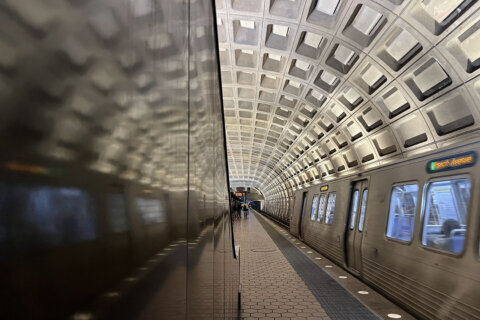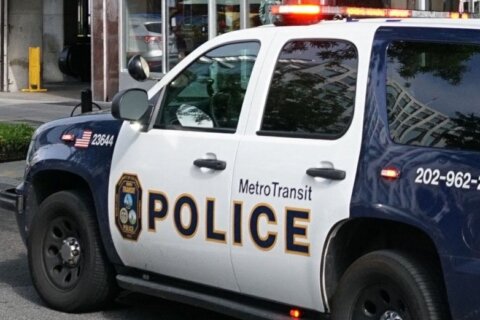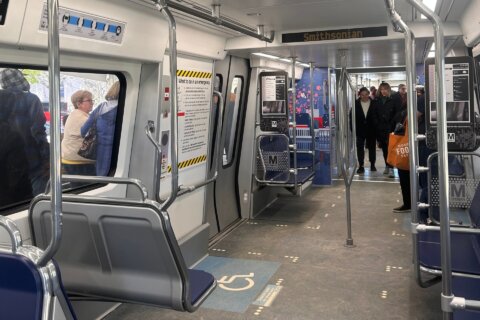WASHINGTON — Orange Line riders are getting the worst of this year’s Metro delays, according to Metro’s own calculations.
Only 71.9 percent of all Metro riders’ trips meet Metro’s definition of “on time,” but on the Orange Line that number is just 58.9 percent. That means more than one-third of Orange Line riders are late.
The Yellow and Green lines have the best on-time rates for riders through the end of September, at around 77 percent.
Metro’s measurement counts riders as on time if their trip from fare gate to fare gate takes less time than the scheduled amount of time between trains at that time of day, plus the scheduled length of the ride to the destination station, plus some additional time to walk to and from the platform.
“Unplanned work accounted for the bulk of customer delays, and customer travel was also impeded by speed restrictions,” read Metro’s quarterly performance report, called Vital Signs.
General Manager Paul Wiedefeld believes that increase in speed restrictions is a sign of progress for the system, as inspectors point out problems. However, some other restrictions have been implemented for safety after federal inspectors were nearly run over by a train.
The speed restrictions across the system have frustrated riders facing slower trips and often get little explanation.
Metro riders are most likely to be late during the afternoon rush hour, when systemwide on-time ratings slipped to 54.6 percent in September. Overall, 65.9 percent of riders have been on time during the afternoon rush this year.
Weekend on-time ratings are also low, at 68.7 percent year-to-date and 64.3 percent in September, with even more track work pushing trains farther apart.
By Metro’s old measure of on-time performance — whether trains arrived at roughly the scheduled intervals — the system looks somewhat better, but still shows a continued steady decline over the last two and a half years.
“This quarter, 60% of service disruptions were railcar related (either because railcars failed in service or were not available for service); 18% were infrastructure related; 12% were related to transit police responses, sick customers, or unattended bags; and 10% were other issues,” the report says.
Metro aims to improve training for mechanics, do more track work, and fix escalators, elevators and fare gates to help riders catch trains. The agency is also looking at shuffling cars from one rail yard to another to make sure trains are actually in place to start their runs.
Metro hopes more new 7000 Series cars could help address some railcar issues, but even with 20 new cars now expected each month, the cars that are most prone to delays will stay in service for a while.
Metro is retiring the oldest cars, the 1000 Series, based on National Transportation Safety Board recommendations following a series of crashes. In service, though, they are much more reliable than the 4000 and 5000 Series cars. The 1000 Series have gone an average of 72,275 miles between delays this year compared with just 26,034 miles for 4000 Series cars.
Repair goals to improve that reliability include coming up with fixes for railcar parts that fail on a regular basis, and addressing other issues such as air conditioning breakdowns that led to so many “hot cars” in July and August.
That led to a shortage of cars available to run full scheduled service, and increased crowding even amid sharply dropping ridership.
The report says in mid-to-late September more railcars were available, providing enough cars for complete scheduled service “most days.”







